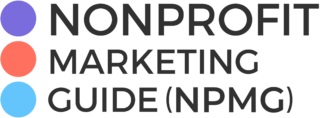
Nonprofits need people to do things. That’s the only way we can achieve our mission of changing the world. And if you need someone to do something, you need a good call to action (or CTA). Calls to action are our instructions for what we want people to do.
And yet, nonprofits sometimes make what should be simple, clear instructions too complicated and vague.
Let’s use the 5 W’s and H to improve your calls to action.
Who
The who is always the person you ask to do the thing. Speak directly to them as an individual. So, if you need to use a pronoun, that pronoun is always YOU.
What
Be specific! Words like support, help, and a dozen other common nonprofit words are not good enough because they include too many possible actions.
Don’t be sheepish. If you seem embarrassed or guilty when asking, that’s a clear sign to your volunteers or donors that they might feel embarrassed or guilty themselves by following through. Remember, asking is about giving people an opportunity, not taking something away from them. We often mirror emotions in these situations, so if you want someone excited to volunteer or donate or register, you should show a little enthusiasm yourself.
When
One of the most essential elements of conversion copywriting (all the words around your call to action) is a sense of urgency. If we can do something later, most of us will because we are too busy now. So, a good call to action will also include urgency. Even adding the word now can help. Donate Now is stronger than Donate.
Why
We always need the why. We especially need the Why when asked to do something new, different, or hard. Always be clear about your why in your conversion copywriting around your ask. Please (Insert Call to Action) so that (Result Will Follow).
In some cases, you can even turn the call to action into the results you are seeking:
- Feed a family
- Rescue 10 kittens
- Find a cure
Where
In a presentation I saw by Dan Heath, co-author of Switch: How to Change When Change is Hard, he said, “A jerk with a map is better than a saint without one.”
In other words, with clear directions, even people who are otherwise labeled as selfish will give more than good-hearted people who aren’t told how to help. When you obsess about the path, you greatly increase the odds that people will follow your call to action. That’s why it does matter how many clicks it takes to get to your donation page or register for your event.
Be sure to prioritize your call to action so people can see it and that path very clearly!
How
Dan Heath also said that most people think the change process goes like this: Analyze > Think > Change.
But it doesn’t. It’s much more like See > Feel > Change. This is precisely why you should tell stories and set the context for what you are asking people to do. Help your supporters see the problem, feel empowered to help fix it, and then learn how to follow through quickly.
Here’s more advice you might like:






